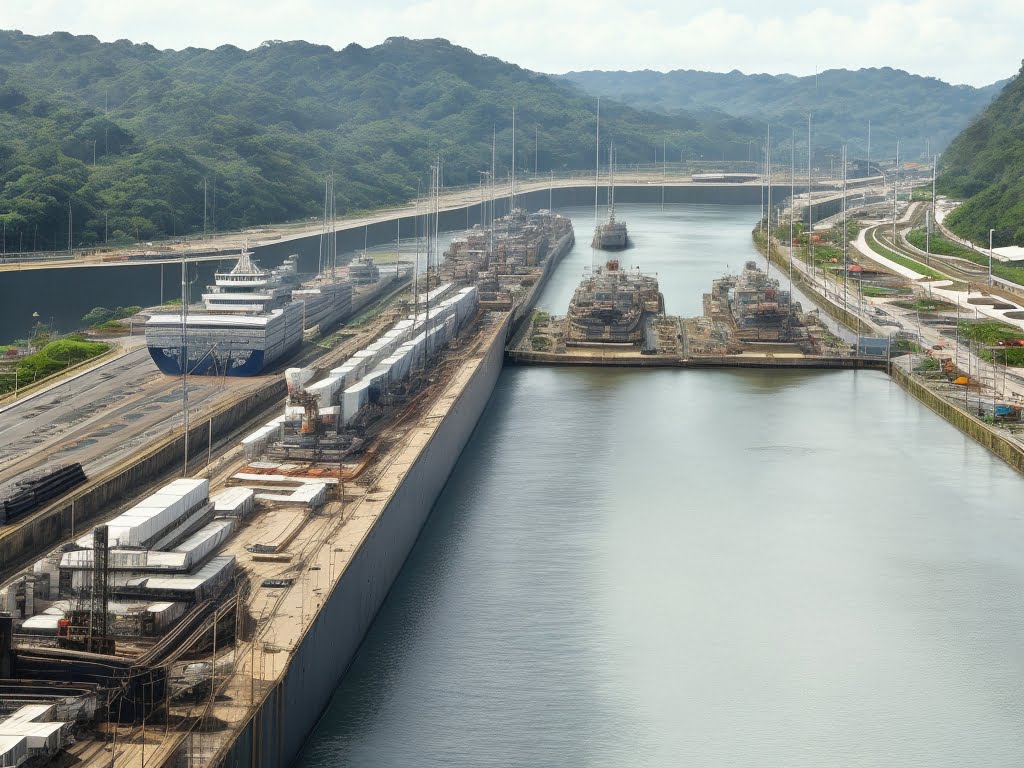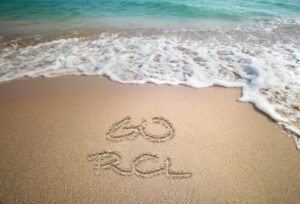Embark on a fascinating journey through time as you explore the rich history of Panama Canal. Discover the remarkable story behind this engineering marvel, from its ambitious beginnings to its transformative impact on global trade. Learn how the Panama Canal has played a pivotal role in connecting continents, reshaping economies, and bringing people together from different corners of the world. Unveil the extraordinary feats of ingenuity, perseverance, and determination that have made the Panama Canal an iconic symbol of human innovation. Let’s set sail and uncover the captivating tale of the Panama Canal’s past.
Table of Contents
ToggleHistory of Panama Canal
Exploring the Pre-Construction Era
Before the construction of the Panama Canal, the natural route presented numerous obstacles that impeded the connection between the Atlantic and Pacific Oceans. The difficult terrain, including dense jungles, steep mountains, and the wide Chagres River, made it challenging for explorers and adventurers to navigate through the isthmus. Despite these hardships, early expeditions and surveys were conducted to assess the feasibility of creating a waterway that would revolutionize global trade.
Natural Route Obstacles
The isthmus of Panama is known for its treacherous landscape, which posed significant challenges for engineers and explorers attempting to create a canal. The dense rainforests, mountains, and the Chagres River presented formidable natural barriers that had to be overcome. The Chagres River, in particular, proved to be a significant obstacle due to its unpredictable currents and tendency to flood. These natural obstacles complicated the task of establishing a viable route for a canal.
Early Exploration and Surveys
In the early 16th century, Spanish explorers recognized the strategic importance of finding a water passage across the isthmus of Panama. Expeditions led by Christopher Columbus and Vasco Núñez de Balboa laid the foundation for further exploration and surveys. The Spanish Crown commissioned various expeditions throughout the centuries to assess the possibility of constructing a canal and to determine the most feasible route. These early efforts set the stage for future attempts at building a canal that would connect the Atlantic and Pacific Oceans.
French Attempts: The First Chronicle of Failure
The first attempt to construct a canal in Panama was made by the French in the late 19th century, led by Ferdinand de Lesseps. Inspired by the success of the Suez Canal, Lesseps believed that a similar feat could be achieved in Panama. However, the ambitious project faced numerous setbacks, including engineering challenges, rampant diseases like yellow fever and malaria, and financial difficulties. Despite extensive efforts, the French ultimately abandoned the project, leaving behind a legacy of failure and valuable lessons for future endeavors.
The United States Steps In
Following the French failure, the United States took up the challenge of building the Panama Canal. It acquired the rights to construct and operate a canal through Panama, inheriting the immense obstacles left by the French. The transfer of authority from the French to the Americans marked a significant turning point in the canal’s history and set the stage for the daunting task ahead.
The French Handover
The handover of the Panama Canal project from the French to the United States in 1904 was met with a mix of optimism and skepticism. The United States, armed with the lessons learned from the French failure, sought to overcome the engineering hurdles that had plagued the previous attempt. The organization and expertise of the American effort soon proved to be a critical factor in the eventual success of the canal.
Building the American Dream
Under the leadership of Chief Engineer John Stevens, the American team embarked on an ambitious plan to construct the canal. Their approach included massive excavation projects, the implementation of innovative engineering techniques, and the establishment of worker communities in the challenging tropical environment. The Americans’ determination and perseverance propelled the construction forward, heralding a new era in the project’s history.
Challenges and Triumphs
Building the Panama Canal was no easy task, and the American construction effort faced numerous challenges along the way. The treacherous terrain, harsh weather conditions, and the prevalence of diseases like yellow fever and malaria were just some of the obstacles that had to be overcome. However, the American engineers, alongside an army of workers, persevered through these challenges, leading to several groundbreaking achievements and triumphs during the construction phase.
Construction Unveiled: A Tale of Sweat and Toil
The construction of the Panama Canal was an epic tale of sweat and toil, involving ingenious design, a massive workforce, and scientific innovations that tackled complex engineering challenges. This section will delve into the intricate details that made the construction of the canal possible.
Ingenious Design: The Lock System
One of the most significant engineering feats of the Panama Canal was the design and implementation of a lock system. The lock system allowed ships to navigate the varying water levels along the canal, providing a safe and efficient passage across the isthmus. The innovative lock design showcased the ingenuity and expertise of the engineers involved in the project.
Thousands of Workers: The Manpower Behind the Scenes
The construction of the Panama Canal required the labor of thousands of workers from various corners of the world. Men from countries such as the United States, Panama, and the Caribbean toiled under difficult conditions to make the canal a reality. Their dedication and hard work played a pivotal role in the success of the project, shaping the history of the canal.
Scientific Innovations: Tackling Engineering Challenges
The construction of the Panama Canal also witnessed numerous scientific innovations that helped overcome engineering challenges. Techniques such as steam shovels, floating cranes, and dredging machines were utilized to excavate the necessary channels and remove immense amounts of earth and rock. These advancements not only expedited the construction process but also paved the way for future engineering marvels.
Panama Canal in Operation: An Engineering Marvel
With the completion of the Panama Canal, a hundred-year-old continuity was born, forever changing the global trade landscape. This section will explore the remarkable impact of the canal and its transformation into an engineering marvel.
A Hundred-Year-Old Continuity
Since its inauguration in 1914, the Panama Canal has steadfastly maintained its role as a vital waterway connecting the Atlantic and Pacific Oceans. Its enduring presence and functionality are a testament to the engineering brilliance that went into its construction.
Trade Revolution: Connecting the Oceans
The opening of the Panama Canal brought about a revolution in global trade. The canal significantly reduced travel distances and time for ships, creating a shortcut between the Atlantic and Pacific Oceans that had previously been a long and arduous journey. This dramatic transformation in maritime routes opened up new trade opportunities, fostered economic growth, and forever altered the dynamics of international commerce.
Canal Expansion: Modernizing the Waterway
To meet the evolving needs of the global shipping industry, a massive expansion project was undertaken to widen and deepen the canal. Completed in 2016, this modernization effort allowed for larger vessels, known as New Panamax ships, to transit through the canal, further enhancing its capacity and efficiency.
From Historical Events to Modern Panama Canal Tours
The Panama Canal’s rich history is intertwined with several significant historical events and transitions of power. This section will explore how these events shaped the canal’s future and led to the introduction of tourism as a means of appreciating its historical and engineering significance.
World War I and II: Shaping the Canal’s Future
The two World Wars played a pivotal role in shaping the future of the Panama Canal. The strategic importance of the canal became clear during these global conflicts, as it provided a vital link for naval forces and facilitated the movement of troops and supplies. The experiences gained during these wars highlighted the need for the canal’s fortification and inspired improvements to its infrastructure.
Handover to Panama: Sovereignty Restored
On December 31, 1999, Panama regained full control and sovereignty over the canal, marking a historic moment in its history. The transfer of authority from the United States to Panama was a significant step towards the complete ownership and management of this global icon by the Panamanian people.
Tourism and Tourism: Current State and Impact
As the demand for exploring the Panama Canal’s legacy grew, the canal’s historical and engineering significance became increasingly appreciated by tourists. Today, visitors have the opportunity to learn about the canal’s history, witness its operations, and gain insight into the remarkable engineering achievements through various visitor centers and tours. This section will delve into the current state of tourism surrounding the Panama Canal and its impact on the local economy.
Glimpses into the Canal’s Past: Fascinating Facts and Figures
Delving into the fascinating facts and figures surrounding the Panama Canal offers a deeper understanding of its significance and impact on world trade. This section will provide intriguing insights into the dimensions and statistics of the canal, notable canal crossing moments, and its overall influence on global commerce.
Dimensions and Statistics
Understanding the immense scale of the Panama Canal is crucial to appreciating its engineering achievement. The canal stretches approximately 50 miles, connecting the Atlantic Ocean to the Pacific Ocean. Its impressive width and depth allow for the passage of large vessels, while numerous locks help elevate and lower ships to the different water levels along the canal.
Notable Canal Crossing Moments
Over its long history, the Panama Canal has witnessed significant moments that have captured the world’s attention. From the inaugural crossing by the SS Ancon in 1914 to the modern-day transit of extraordinary vessels, each canal crossing has represented a triumph of engineering and showcased the canal’s vital role in global trade.
The Impact of the Canal on World Trade
The Panama Canal’s impact on world trade cannot be overstated. By providing a more direct and efficient route between the Atlantic and Pacific Oceans, the canal has revolutionized the shipping industry and transformed global trade patterns. The ability to transport goods quickly and cost-effectively through the canal has had far-reaching economic implications for countries around the world.
The Panama Canal: A Global Icon
The remarkable engineering achievement of the Panama Canal has earned it global recognition and prestigious World Heritage status. This section will explore the canal’s acclaim as a global icon, its role in connecting continents, and its future prospects.
Recognitions and World Heritage Status
The Panama Canal’s architectural and engineering significance has garnered international recognition. In 2007, the United Nations Educational, Scientific and Cultural Organization (UNESCO) designated the canal as a World Heritage site, highlighting its exceptional universal value and contribution to humanity.
The Canal’s Role in Connecting Continents
Beyond its physical presence, the Panama Canal serves as a symbolic bridge connecting continents and cultures. This vital waterway stands as a testament to the power of human ingenuity and our ability to overcome seemingly insurmountable obstacles. It has become a universally recognized symbol of human achievement.
The Future of the Panama Canal
As the world continues to evolve, so does the Panama Canal. The future holds exciting possibilities for its expansion, technological advancements, and adaptations to changing global trade dynamics. The canal’s role as a critical link in international commerce is expected to remain prominent, ensuring its relevance for generations to come.
Exploring the Canal: Visitor Centers and Tours
To fully appreciate the historical and engineering significance of the Panama Canal, visitors can explore various visitor centers and embark on informative tours. These immersive experiences offer insights into the canal’s construction, operations, and its impact on global trade.
Miraflores Visitor Center
Located on the Pacific side of the canal, the Miraflores Visitor Center provides a comprehensive overview of the canal’s history and engineering marvels. Visitors can witness ships passing through the Miraflores Locks, explore interactive exhibits, and gain firsthand knowledge of the canal’s operations.
Gatun Visitor Center
Situated near the Atlantic entrance of the canal, the Gatun Visitor Center offers visitors an opportunity to observe the canal’s operation from a different perspective. From the center, visitors can witness ships passing through the Gatun Locks, visit the museum, and learn about the vital role the locks play in transiting vessels.
Partial and Full Transit Tours
For those seeking a more immersive experience, partial and full transit tours are available, allowing visitors to sail through the entire length of the canal. These guided tours offer a unique vantage point to witness the engineering marvels up close and gain a deeper understanding of the canal’s history and significance.
Panama Canal Expansion: A New Chapter in History
Recognizing the need for increased capacity and efficiency, the Panama Canal underwent a historic expansion project that would redefine its capabilities. This section will explore the purpose and benefits of the expansion, the construction and engineering challenges involved, and the economic impacts it has had on global trade.
Purpose and Benefits
The purpose of the Panama Canal expansion was to accommodate larger vessels, known as New Panamax ships, and increase the canal’s capacity and efficiency. By widening and deepening certain sections, the expansion aimed to enhance the canal’s ability to accommodate the growing demands of international trade and maintain its competitive edge in the shipping industry.
Construction and Engineering Challenges
The expansion of the Panama Canal presented its own set of significant construction and engineering challenges. The need to excavate millions of cubic meters of soil and rock, alongside extensive preparation and reinforcement of existing structures, required meticulous planning and execution. Overcoming these challenges demanded innovative solutions and the expertise of engineers from around the world.
Economic Impacts
The completion of the Panama Canal expansion has had far-reaching economic impacts on global trade. By allowing larger vessels to transit through the canal, the expansion has increased shipping capacity, reduced transportation costs, and shortened travel times for goods traveling between continents. This has resulted in improved efficiency and competitiveness for countries involved in international trade, while also opening up new opportunities for economic growth.
Preserving the Legacy: Maintenance and Upkeep
Ensuring the continued operation and longevity of the Panama Canal requires ongoing maintenance and upkeep efforts. This section will delve into the dredging and maintenance efforts, lock maintenance and modernization projects, and the importance of environmental sustainability in preserving the canal’s legacy.
Dredging and Maintenance Efforts
Regular dredging is essential to maintaining the necessary depth and width of the canal’s channels, allowing for the smooth passage of ships. Additionally, ongoing maintenance efforts focus on keeping the locks, dams, and other infrastructure in optimal condition, ensuring the safe and efficient operation of the canal.
Lock Maintenance and Modernization
As a critical component of the canal’s operation, the locks require regular maintenance and periodic modernization to keep them in prime working condition. Upgrading and improving the lock system is key to addressing future challenges and meeting the changing needs of the shipping industry.
Environmental Sustainability
Preserving the pristine natural environment surrounding the canal is equally crucial to its long-term sustainability. The Panama Canal Authority is committed to implementing environmentally friendly practices, such as reforestation initiatives and wildlife conservation efforts, to maintain the delicate ecological balance of the canal zone.
In conclusion, the Panama Canal is a testament to human innovation, perseverance, and engineering brilliance. From the early exploration and French failure to the successful American construction and subsequent expansion, the canal has continuously connected continents and transformed global trade. Its rich history, recognized as a global icon, and its role as an engineering marvel make the Panama Canal an extraordinary feat of human achievement. Visitors can now explore its legacy through informative visitor centers and engaging tours, immersing themselves in the fascinating history and engineering behind this remarkable waterway. As the canal continues to adapt to the changing dynamics of global trade, its future remains bright, ensuring its enduring significance for generations to come.





